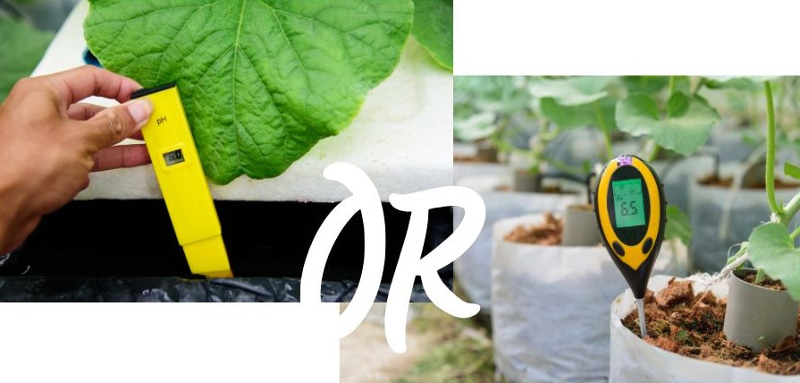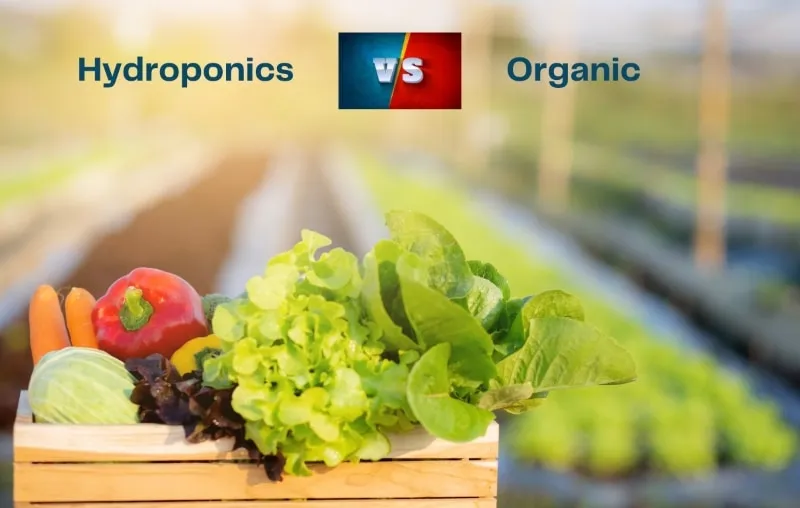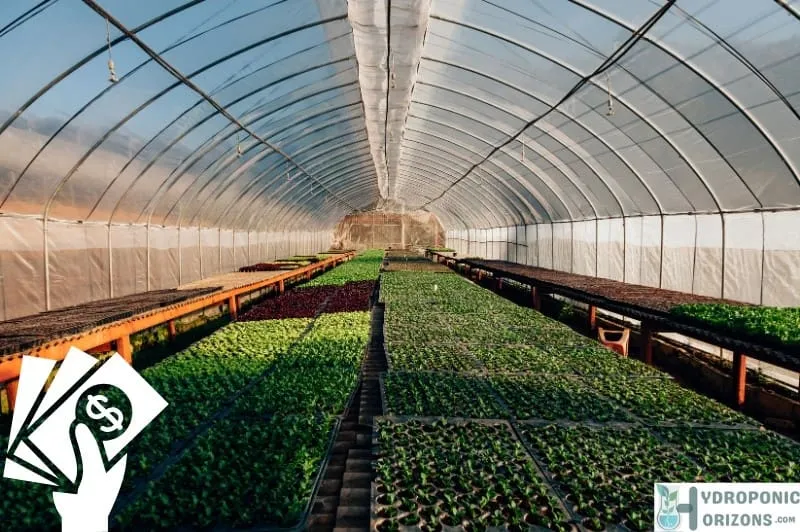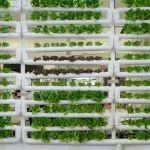Are you tired of the hassle that comes with traditional soil-based gardening? Do you long to grow your own fresh produce but lack the space or resources for a traditional garden? Well, you’re in luck! Hydroponics, a soilless cultivation method, may just be the solution you’ve been searching for as it allows you to grow plants in a nutrient-rich water solution. In this comprehensive introduction to hydroponics 101, we will guide you through the basics of this innovative method of gardening, perfect for beginner hobbyists or amateurs looking to start growing plants hydroponically on a small scale at home.

As you delve deeper into the world of hydroponics, you’ll begin to uncover the various methods, tools, and techniques that can help you create an ideal environment for your plants. With this hydroponics guide, you’ll be well-equipped to start with the knowledge and confidence needed to start your journey towards a successful hydroponic garden and reap the benefits of fresh, homegrown produce.
- What is Hydroponics?
- What Are the Basics of Hydroponics 101?
- Benefits of Hydroponics
- Disadvantage of Hydroponics
- What Are the 2 Categories of Hydroponics?
- Hydroponic Grow Media
- Different Types of Hydroponic Systems
- Plant Nutrients and pH Requirements
- Basic Tools and Components for Hydroponics
- Tips to Know Before Starting to Grow
- Final Thoughts on Hydroponics 101
What is Hydroponics?
Hydroponics is a method of growing plants without soil, instead using a nutrient-rich water solution to deliver the necessary nutrients directly to the plant roots. This innovative approach to cultivation offers you a number of benefits, such as faster growth, higher yields, and the ability to grow plants in limited space or without access to fertile soil.
You’ll be glad to know that there are several different systems you can choose from, each with unique advantages and considerations. By understanding the basics of each system, you’ll be able to determine which one best suits your needs and preferences for growing plants hydroponically, whether indoors or in a backyard or greenhouse.
What Are the Basics of Hydroponics 101?
Let’s dig into some of the fundamental concepts and components involved in this soilless cultivation technique.
First and foremost, you’ll need to choose a hydroponic system that suits your needs and space. There are seven primary types of hydroponic systems, each with its unique characteristics.
After selecting a suitable hydroponic system, you’ll need to make sure your plants receive the proper nutrients. A high-quality hydroponic nutrient solution contains all the essential elements your plants would typically get from soil. You’ll want to choose a premixed nutrient solution or create your own using individual components, ensuring your plants receive the vital macro and micronutrients they need.
Creating an optimal environment is another crucial factor for successful hydroponic gardening. Ensure your plants have access to adequate light, temperature, and humidity. If you’re growing your hydroponic garden indoors, consider LED or fluorescent grow lights to provide sufficient lighting. Monitor and control the temperature and humidity levels to mimic the plants’ ideal natural conditions.
Lastly, proper maintenance of your hydroponic system is essential for sustained growth and plant health. Regularly check and adjust pH levels in the nutrient solution, clean your system, and replace nutrient solution as necessary. By following these basic principles, you’ll be well on your way to a thriving hydroponic garden tailored to your specific needs and environment.
Benefits of Hydroponics
There are several key advantages to hydroponic gardening that make it an attractive option for beginners and experienced gardeners alike. In this section, you’ll learn about the main benefits of using soilless cultivation methods.
Higher Efficiency
Hydroponic systems use water more efficiently than traditional soil-based methods. By recycling and recirculating water, you can save a lot more than in a conventional garden. This is not only eco-friendly but also cost-effective, making it an ideal choice for sustainable gardening enthusiasts.
Faster Growth Rates
With hydroponics, your plants will typically grow faster than they would in soil. This is because the nutrients they need are delivered directly to their roots in a readily available form that they can easily absorb. This enables your plants to channel more energy into growth, making it possible to harvest crops sooner and get your next round of crops started earlier.
Heavier Yields
Another significant advantage of hydroponic farming is the potential for increased yields. Optimized growing conditions in a hydroponic system typically result in healthier plants that produce more fruit or vegetables. This means you’ll get more bang for your buck from your plants in a smaller space.
Less Space Needed
Hydroponics allows you to grow plants in a much smaller area compared to traditional soil-based gardening. Without soil to burrow through for nutrients, the root system takes up less space, which enables you to grow more plants in the same area. This makes hydroponics perfect for urban settings or small backyard gardens.
Good for Indoor Plants or Urban Gardening
As mentioned earlier, hydroponic systems require less space than traditional gardening methods, making them great for indoor use. This means you can grow your favorite plants year-round and even in the comfort of your own home, regardless of the weather conditions outside.
Battling Pests is Easier
It’s generally easier to control pests and plant diseases in a hydroponic system. Because there is no soil, common soil-borne pests and diseases are less likely to occur. Plus, the controlled environment typically used in hydroponic setups allows you to closely monitor and manage any issues that do arise.
No Digging or Weed Control
One of the most significant benefits you’ll enjoy with hydroponics is the absence of weeding and tilling! Soilless cultivation eliminates the need for digging, turning soil, and battling pesky weeds, making hydroponic gardening a far less time-consuming and labor-intensive hobby.
Related: Read our detailed guide on hydroponics advantages and disadvantages vs. soil growing.
Disadvantage of Hydroponics
While hydroponics offers many advantages, there are some drawbacks to consider when deciding whether this is the right choice for you. In this section, we’ll discuss two main disadvantages.
Tougher for New Growers
As a beginner, you may find that starting with hydroponics can be a bit more challenging than traditional soil-based gardening. This is because you’ll need to learn a new set of skills, such as proper nutrient management and maintaining the right pH levels.
Moreover, the level of monitoring required for a hydroponic system can be overwhelming for some beginners. Since plants do not have access to the nutrients and moisture naturally found in soil, you’ll have to provide those but you don’t have a lot of room for error. You’ll have to closely monitor the nutrient solution and make adjustments as needed.
To help ease the learning curve, consider the following tips:
- Start with a simple hydroponic system, such as a deep water culture (DWC) or nutrient film technique (NFT) setup, to help minimize potential issues.
- Consider buying a suitable hydroponics kit, which may be more expensive, but is easier to operate on the whole.
- Invest in reliable equipment, like nutrient meters and pH testers, to avoid inaccurate readings and maintain optimal conditions for your plants.
- Seek advice from experienced hydroponic gardeners or online forums for help troubleshooting any issues you encounter.
Want a step-by-step guide on hydroponic gardening for beginners? Check out this article in our Hydroponic Basics series: Hydroponics for Beginners.
Higher Investment
Another potential disadvantage of hydroponic gardening is the higher upfront cost associated with the initial setup. Although there are DIY options available to help reduce costs, purchasing the necessary equipment and materials for a hydroponic system can still be more expensive than starting a traditional soil-based garden.
Keep in mind that the long-term benefits of hydroponics, such as increased yield and faster growth rates, can help offset the initial financial investment. To minimize costs, you can:
- Shop around for deals on equipment, or even consider buying used equipment from fellow hydroponic enthusiasts.
- Opt for modular systems that allow you to expand your hydroponics basic setup as your budget and experience grow.
- Explore DIY options for constructing your own hydroponic system using inexpensive materials.
Needs Stable Water Supply and Electricity
In conventional soil-based farming, plant roots are allowed to slowly percolate water and nutrients from the soil. However, with hydroponics, the nutrient solution is continually flowing around the roots, providing the plant with all of the water and nutrients it needs.
Plants rapidly get stressed or even die without a reliable water source. Power outages or electrical failures can have devastating effects on hydroponic systems as well because of the dependence of these systems on electricity to run pumps, lights, and other equipment.
Growers using hydroponic methods should safeguard their crops by securing a steady supply of water and investing in backup power sources like generators or batteries.
What Are the 2 Categories of Hydroponics?
As you venture into the world of hydroponics, it’s essential to understand the two primary categories of hydroponic systems: active hydroponics and passive hydroponics. Both categories offer unique advantages and varying levels of complexity, better suited to the needs of different growers. In this section, we’ll explore the differences between active and passive hydroponics.
Active Hydroponics
Active hydroponic systems rely on mechanical techniques to deliver nutrients and water directly to your plants’ roots. Usually, these systems use pumps or other automated equipment for nutrient delivery or recapture, and as a result, they require more initial setup and maintenance.
Some examples of active hydroponic systems include:
- Aeroponics
- Nutrient Film Technique (NFT)
- Drip irrigation systems
- Deep water culture (DWC) systems
In active systems, the increased automation ensures that your plants receive optimal nutrient levels at all times, potentially leading to faster growth and higher yields. However, it’s important to note that active systems can be more challenging to set up and maintain, especially for beginners.
Passive Hydroponics
Passive hydroponic systems, on the other hand, facilitate nutrient delivery through wicking, capillary action, or by relying on the natural growth patterns of the plants. These systems are generally easier to set up and maintain, making them perfect for beginners or hobbyists seeking a low-maintenance solution for growing plants at home.
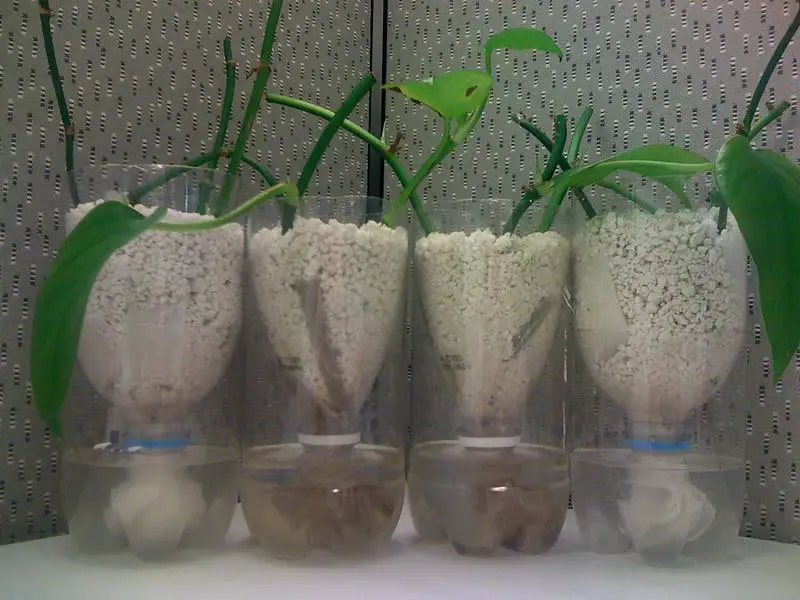
Examples of passive hydroponic systems include:
- Kratky systems
- Wick systems
Passive systems are often more cost-effective and straightforward to manage, making them an excellent starting point for newcomers to hydroponics. However, they may not provide the same level of precision in nutrient delivery as active systems, which could affect plant growth and yield.
As you continue your journey into hydroponics, consider the differences between active and passive systems and take into account your level of experience, budget, and the amount of time you are willing to dedicate to your new gardening endeavor.
Hydroponic Grow Media
As a beginner venturing into the world of hydroponics, it’s important to understand the role of grow media in soilless cultivation. Unlike soil, grow media is completely inert and do not themselves provide any nutrients to the plant. However, they do provide support to the plant’s roots and give them something to anchor to, helping to maintain proper moisture and air levels. If you want to stimulate root growth in plants, the grow medium players an important role here.
There are various types of hydroponic grow media to choose from, each with its own benefits and drawbacks. Here are some common grow media types:
- Coconut Coir: Made from coconut husks, coconut coir is an environmentally friendly and renewable resource. It’s similar to peat moss and has excellent water retention and aeration properties. Here’s how to prepare coco coir for planting in a hydroponic system.
- Perlite: A lightweight, porous volcanic rock that provides good air circulation and drainage but poor water retention. It’s often used in systems that provide a consistent flow of water or it is mixed with another medium that rates high in water retention.
- Expanded Clay Pebbles: These small clay balls are heat-treated, making them porous and lightweight. They provide good aeration and drainage, making them a popular choice amongst hydroponic gardeners. However, they’re rarely used on their own. They need to be cleaned and pretreated to avoid the growth of bacteria.
- Rockwool: Made from basalt rock and chalk, Rockwool is spun into fibers and compressed into cubes or slabs. It has a good balance of water retention and aeration but can make it more difficult for you to judge if you’re providing just the right amount of water to your plants. Learn how to use Rockwool grow cubes here.
- Oasis Cubes: A foam-like material that holds water well and is second to none when it comes to aeration, Oasis Cubes are often used for seed starting and rooting cuttings in hydroponic systems.
Your choice of grow media will depend on the type of hydroponic system you’re using and your specific needs. Since you’re just starting out, it’s a good idea to experiment with different grow media and see which one works best for the plants you want to grow.
Whatever grow media you choose, remember that it’s an essential part of your hydroponic system. Taking the time to select the right grow media for your plants and system can make all the difference in ensuring a successful and enjoyable hydroponic gardening experience.
Different Types of Hydroponic Systems
There are several types of hydroponic systems available for you to choose from, each with its own advantages and requirements. Let’s explore these systems to help you decide which one would be the best fit for your needs and preferences.
Kratky Method
What is kratky hydroponics? The Kratky method is a passive hydroponic system, which means it doesn’t require any pumps or electricity. You’ll simply need to place your plants in a nutrient-filled container, and they’ll absorb the nutrients as the water level decreases. This method is ideal for lettuce and other leafy greens but may not be suitable for very large plants or long-duration crops. Tomatoes are possible if you use large containers.
Wick System
In a wick system, your plants will receive nutrients through a wick that connects the growing medium and nutrient reservoir. This technique is also passive, making it an excellent choice if you want to avoid using electricity in your setup. It’s important to choose a suitable wick material to ensure that your plants receive enough nutrients. However, this system is not recommended for large and water-hogging plants. If you’re interested in starting out small, this is the system to try, so we show you how to make a wick hydroponic system yourself.
Deep Water Culture (DWC) System
In a DWC system, your plants will be suspended in a nutrient-rich solution with their roots directly immersed in the water. An air pump is used to maintain oxygen levels in the reservoir, which is essential for healthy root growth. This system is popular for small-scale hydroponic gardens because of its simplicity and low maintenance. It works well for growing various types of plants, including herbs and veggies.
Nutrient Film Technique System
How nutrient film technique works is that it uses a shallow stream of nutrient solution constantly flowing over the roots of your plants while they remain suspended in a slanted trough. A water pump recirculates the nutrient solution, providing your plants with a continuous supply of vital nutrients. This system suits plants that do well with constant moisture, such as lettuce and strawberries, but may not be ideal for those that require drier conditions, like root vegetables.
Drip System
A drip system delivers nutrient-rich water to your plants through drip lines and emitters set above the roots. The excess solution is collected and returned to the reservoir, making it an efficient choice. You’ll need a water pump and timer for drip irrigation hydroponics, but it works well for a wide range of plant types and sizes, offering precise control over nutrient and water delivery.
Ebb and Flow System
The ebb and flow system, also known as a flood and drain system, works by flooding your plants’ growing trays with nutrient-rich water periodically before draining it back into the reservoir. This system requires a water pump and timer to automate the flooding and draining process. It’s suitable for a variety of plants, but be prepared for a larger initial investment and the need to regularly check the system for proper functioning.
Aeroponics
Aeroponics employs a misting system to deliver nutrients directly to your plants’ roots, which hang suspended in the air. This high-tech method requires the most initial investment and some technical expertise, but it can provide rapid growth and high yields for various types of plants. Keep in mind that maintaining the right humidity and nutrient balance is essential for success with this system. Learn more about it in our guide – What is aeroponics farming? Because the roots are not in water but rather in air, aeroponics is considered to be a subset of hydroponics. Want to know what’s the difference between aeroponics and hydroponics in more detail? Let us show you!
Related: Some of these systems can be used for hydroponic vertical gardening where plants are grown either up along a wall or stacked on a tower or pipe frame.
Plant Nutrients and pH Requirements
One of the key aspects of a successful hydroponic garden is ensuring that your plants receive the right nutrients and maintain the proper pH levels. As a beginner, it’s important that you understand these basic requirements for hydroponics to provide a healthy environment for your plants to grow.
Plant nutrients are typically provided through a nutrient solution, which consists of water and essential minerals. Plants require a balance of macronutrients and micronutrients such as nitrogen, phosphorus, potassium, calcium, magnesium, sulfur, iron, and many others. In hydroponics, you can easily find pre-made nutrient solutions that are specifically designed for various types of plants and growth stages.
To help you understand the nutrient requirements better, here’s a brief overview of some of the main nutrients:
- Nitrogen (N): Vital for leaf growth and overall plant development.
- Phosphorus (P): Supports root growth, flowering, and fruiting.
- Potassium (K): Improves plant vigor, disease resistance, and the quality of fruits and flowers.
- Calcium (Ca): Strengthens cell walls and promotes root development.
- Magnesium (Mg): Essential for photosynthesis and overall plant health.
Another critical aspect of hydroponics is managing the pH level of your nutrient solution. The pH level indicates how acidic or alkaline a solution is on a scale from 0 to 14, with 7 being neutral. Most plants grow best in a slightly acidic environment, with a pH range of 5.5 to 6.
Monitoring and adjusting pH levels are crucial; if the pH level is too high or too low, your plants may not be able to absorb nutrients properly, leading to nutrient deficiencies or toxicities. To maintain the right pH levels, you’ll need to test the nutrient solution regularly using a pH tester and adjust it using pH up or down solutions as needed.
Now that you’re familiar with plant nutrients and pH requirements, you’re one step closer to starting your hydroponic garden. Remember to choose the right nutrient solutions for your plants and monitor the pH levels frequently to ensure a healthy and thriving garden.
Basic Tools and Components for Hydroponics
In this section, let’s explore the essential tools and components you’ll need to start your hydroponic journey. These elements will ensure you can grow healthy plants and maintain a thriving soilless garden.
Water Reservoir
The reservoir is the heart of your hydroponic system. It holds the nutrient-rich water solution that your plants will absorb. Make sure to choose a reservoir with sufficient capacity for your plants and consider its durability and ease of cleaning.
Air Pumps and Air Stones
Providing oxygen to the root zone of your plants is crucial for their growth. If the roots don’t get any oxygen they’ll drown! Air pumps and air stones are an excellent way to achieve this. An air pump pushes air through the tubing connected to air stones, which in turn release tiny bubbles of oxygen into the nutrient solution.
Water Chillers and Heaters
Managing the temperature of your nutrient solution is vital to avoid stressing your plants. Water chillers and heaters regulate the temperature, ensuring it stays within the optimal range for nutrient absorption and overall plant health. The ideal range is 65-70 degrees Fahrenheit. Lower than this can shock the roots and stop growth, while higher temperatures prevent oxygen and nutrient absorbtion.
Water Filtration System
A water filtration system removes impurities and ensures your plants receive clean, high-quality water. This step helps prevent the buildup of unwanted substances, such as hard sediments and algae, both of which can harm your plants and clog your hydroponic system. Two common filtration methods are reverse osmosis filters and chlorine and sediment filters.
pH & ppm Meters
Maintaining the proper pH and nutrient concentration in your water solution is essential for plant growth. Use pH and ppm (parts per million) meters to measure and adjust these parameters accordingly.
Grow Lights
If you’re growing hydroponically indoors or lack sufficient sunlight, grow lights are a must. These artificial light sources mimic the sun’s spectrum and intensity, providing your plants with the energy they need for photosynthesis. Choose from LED, fluorescent, or HID lights based on your space and energy requirements.
Plant Containers
Your plants will need a suitable container to anchor their roots within your hydroponic system. There are various options, such as net pots, grow bags, or even PVC pipes. Select the most suitable container based on your system and plant requirements.
Once you have these basic tools and components, you’ll be well on your way to creating a successful hydroponic garden. Don’t forget to experiment and adjust as needed to achieve the best results for your particular plant varieties and growing conditions.
Tips to Know Before Starting to Grow
As you venture into the world of hydroponics, it’s essential to arm yourself with some basic knowledge to increase your chances of success. Here are a few important tips to consider before you start your hydroponic journey:
1. Pick suitable plants for your system. Most plants can be grown hydroponically, but some are better suited than others. Leafy greens like lettuce, kale, and spinach work well in hydroponic setups, while fruiting plants like tomatoes and peppers may require more attention and care.
2. It is important to follow the recommended feeding schedule for the nutrients in your hydroponic system. Do not estimate the amount of nutrients to use and avoid missing any feedings. Always provide the exact amount of nutrients as instructed by the manufacturer, but adjust accordingly if you notice negative reactions due to over or underfeeding.
Monitor the pH levels and NPK ratios of your nutrient solutions regularly. If your plants appear discolored, damaged, or disfigured, it may indicate a pH imbalance or a nutrient deficiency. Correct these issues by adding buffers or the necessary solution, or by flushing and refilling your reservoir as required.
Furthermore, it’s essential to note that some nutrients are specifically designed for use in hydroponic systems, some only for soil, and others for both. If you’re using hydroponic nutrients, make sure not to use soil-specific nutrients, as they break down much slower.
3. Maintain a water temperature between 65-75°F in your hydroponic system, using water heaters or chillers if necessary. However, it’s important to monitor the temperature closely, as roots are highly sensitive and can be damaged by extreme temperatures.
4. Even if your hydroponic system doesn’t require an air pump, it’s a good idea to use one with an air stone in your reservoir or basin to ensure that the nutrient solution remains oxygenated. Stagnant water can become stale, making the nutrients useless.
5. Maintain good hygiene in your hydroponic system. Keeping your setup clean prevents the buildup of algae and helps avoid potential issues with pests and diseases. Regularly clean and sterilize your equipment, and monitor your plants for signs of distress.
6. You need to trim and train the plants once you’ve started them from seed or clone. To hasten flowering and harvesting, you’ll also need to adjust the schedule of the grow lights.
Final Thoughts on Hydroponics 101
By now, you should have a solid understanding of the basics of hydroponics, including the various systems and methods available for soilless cultivation. As a beginner hobbyist or amateur, starting small and gradually expanding your hydroponic garden is a wise approach. This allows you to gain hands-on experience, make adjustments to your setup, and learn from any mistakes along the way. Remember, practice makes perfect!
When you build a hydroponic garden, always prioritize cleanliness and organization. This will help you avoid potential issues such as pests and diseases. Make sure to thoroughly research the water requirements, nutrients, and pH levels needed for the specific plants you wish to grow, as this information is crucial for their overall health and success.
Finally, don’t be afraid to seek out advice and resources from fellow hydroponic gardeners and professionals, both online and in your local community. By doing so, you’ll find a wealth of knowledge and support, ensuring that your hydroponic journey is both enjoyable and rewarding. Happy gardening!

